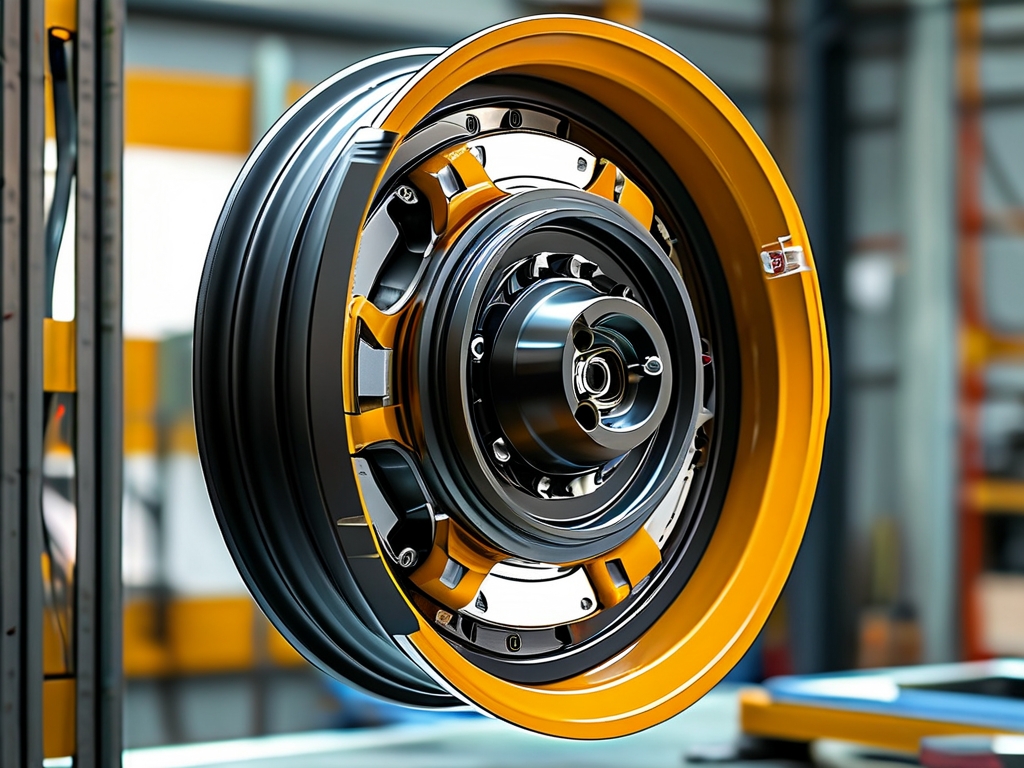The rapid evolution of robotics has transformed industries ranging from automotive manufacturing to logistics. Among the critical advancements in this field, robotic wheel hub installation technology stands out as a cornerstone for enhancing precision, efficiency, and scalability in automated systems. This article explores the technical intricacies, applications, and future trends of this transformative technology.

1. The Importance of Wheel Hub Installation in Robotics
Wheel hubs serve as the pivotal connection between a robot’s chassis and its wheels, ensuring stability, load distribution, and motion accuracy. In industrial robots, autonomous vehicles, and mobile robotic platforms, improper hub installation can lead to mechanical failures, reduced operational lifespan, and safety hazards. Traditional manual installation methods are time-consuming and prone to human error, making automation not just preferable but essential for modern manufacturing and logistics.
2. Core Components of Robotic Wheel Hub Installation Systems
A state-of-the-art robotic wheel hub installation system integrates several advanced components:
- Robotic Arms: Equipped with high-torque actuators and multi-axis mobility, these arms handle heavy hubs and align them with sub-millimeter precision.
- Vision Systems: Machine vision cameras and LiDAR sensors scan wheel hubs and axles to detect imperfections and ensure perfect alignment.
- Force-Torque Sensors: These sensors provide real-time feedback to adjust insertion force, preventing damage to delicate components.
- AI-Driven Control Software: Algorithms analyze data from sensors to optimize installation paths and predict maintenance needs.
3. Step-by-Step Installation Process
The installation process involves four key stages:
- Pre-Installation Inspection: The system scans the wheel hub and axle for defects using 3D imaging.
- Alignment and Positioning: The robotic arm adjusts the hub’s angle and position based on real-time sensor data.
- Insertion and Fastening: Precision grippers secure the hub while automated tools tighten bolts to specified torque levels.
- Post-Installation Verification: Sensors conduct stress tests and vibration analyses to confirm installation integrity.
4. Advantages Over Traditional Methods
Automated wheel hub installation offers unparalleled benefits:
- Speed: Robots complete tasks 3–5 times faster than human workers.
- Accuracy: Error margins are reduced to less than 0.1 mm, critical for high-performance robotics.
- Scalability: Systems can operate 24/7, ideal for mass production environments.
- Safety: Eliminates risks associated with manual handling of heavy components.
5. Challenges and Solutions
Despite its advantages, the technology faces challenges:
- Material Variability: Hubs made of composite materials or unconventional alloys may require adaptive gripping mechanisms.
- Calibration Complexity: Frequent recalibration is needed to maintain precision. Modern systems use self-calibrating AI algorithms to address this.
- Cost Barriers: Initial setup costs are high, but long-term ROI from reduced labor and downtime justifies the investment.
6. Industry Applications
This technology is revolutionizing sectors such as:
- Automotive Manufacturing: Streamlining assembly lines for electric and autonomous vehicles.
- Aerospace: Ensuring precision in drone and satellite wheel systems.
- Warehouse Robotics: Enhancing the reliability of autonomous mobile robots (AMRs) in logistics.
7. Future Trends
Emerging innovations are set to redefine robotic wheel hub installation:
- Collaborative Robots (Cobots): Smaller, AI-powered cobots will work alongside humans in hybrid assembly lines.
- Quantum-Sensing Technologies: Ultra-precise sensors will enable nano-level adjustments.
- Sustainable Practices: Recyclable materials and energy-efficient systems will align with global green manufacturing goals.
Robotic wheel hub installation technology represents a fusion of mechanical engineering, artificial intelligence, and industrial automation. As industries demand higher efficiency and reliability, this technology will continue to evolve, paving the way for smarter, safer, and more sustainable robotic systems. By addressing current limitations and embracing future innovations, businesses can unlock new levels of productivity in the age of automation.








